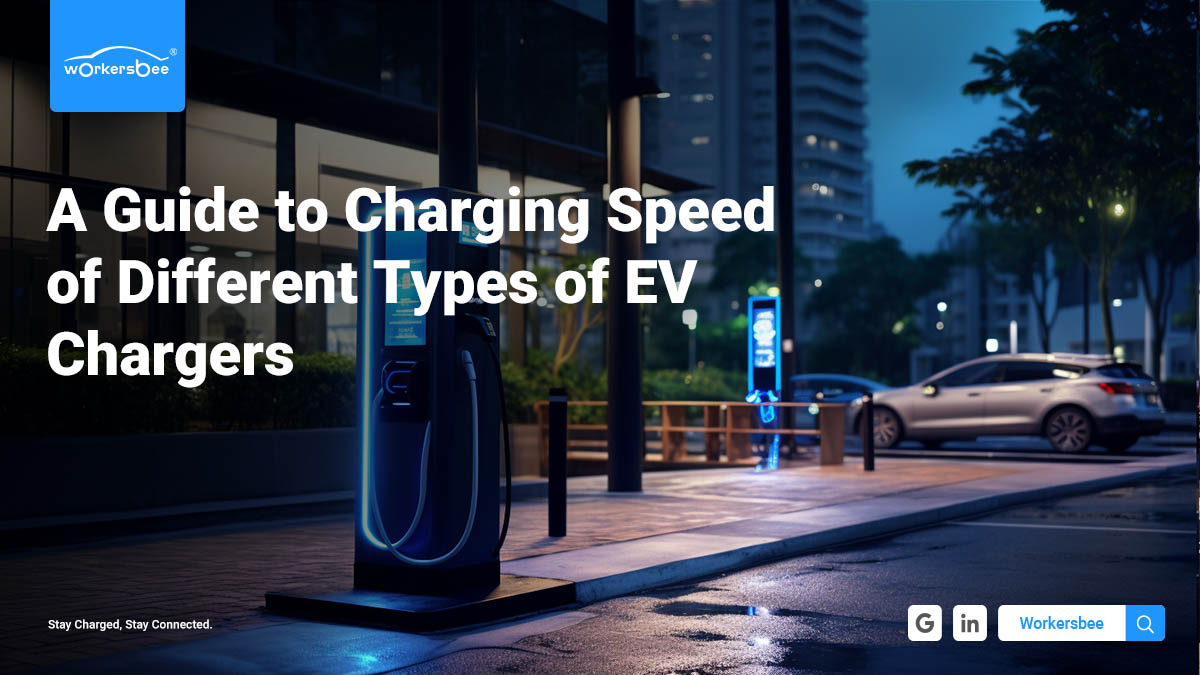 EV Charging Speed Explained: AC vs. DC, What’s Best for Your Needs?
EV Charging Speed Explained: AC vs. DC, What’s Best for Your Needs?
Mar 21, 2024
Electric vehicles (EVs) promise a cleaner, smarter future—but only if charging is fast, reliable, and user-friendly. Different charger types offer hugely different speeds, from mere miles per hour to a full refill in under 30 minutes. Knowing how each charger type performs empowers EV owners to pick the right solution for their needs, ultimately making the transition to electric vehicles more seamless.
What Determines EV Charging Speed?
Several factors influence how quickly your EV charges:
Charger type & power output – AC Level 1 and 2 are slower; DC fast charging delivers power directly into the battery.
Battery size and State of Charge (SoC) – Larger batteries take longer; charging is fastest between 20–80 % SoC.
Vehicle’s onboard charger & BMS – These set limits on voltage and current.
Temperature & thermal management – Extreme temperatures slow charging.
Battery age & load during charging – Aged batteries or additional electrical loads can reduce speed.
Level 1 AC (120 V): The Slow but Simple Option
Power: ~1–1.9 kW
Speed: +3–5 miles of range per hour
Best use: Overnight home charging, low daily mileage
Why it works: No installation needed—just plug into a standard outlet
Drawback: Multiple nights for full charge—ideal for light commuting only
Level 2 AC (240 V): Home & Public Sweet Spot
Power: Up to 19.2 kW
Speed: +10–50 miles range per hour
Best use: Home garages, workplaces, public lots
Benefits: Faster charging with time-of-use electricity, cost-effective, battery-friendly
Bonus: Portable Level 2 chargers (like Workersbee’s) combine convenience and top-tier safety
DC Fast Charging: Speed for Every Journey
Power: 25–400 kW
Speed: 0→80 % in 20–45 minutes
Best use: Highway + urban public stations; urgent charging needs
Example: Tesla Superchargers add ~200 miles in 15 minutes—enabled by Tesla’s power and efficiency standards
Industry trend: Adoption of NACS by EVSE makers led Workersbee to invest in fast�charging connectors based on this standard
Wireless Charging: Emerging Innovation with Caveats
Method: Inductive charging through pads—cable-free
Speed: Highly variable, generally slower than Level 2
Best use: Convenient short stops, specialized use cases
Challenges: Infrastructure cost, alignment, still in early adoption stage
Comparing Charger Types at a Glance
Charger Type
Power Output
Range per Hour
Full Charge Time
Ideal Scenario
Level 1 AC
1–1.9 kW
3–5 miles
30–50 h
Light commuter, no charger install
Level 2 AC
3.7–19.2 kW
10–50 miles
4–8 h
Daily charging at home/work
DC Fast Charger
25–400 kW
100–300+ miles/hr
20–45 min (0–80 %)
Road trips, time-critical refueling
Wireless (inductive)
Varies
Low–medium
Slow – medium
Niche, convenience-focused use
Choosing the Right Charger for You
Home commuter? → Level 2 charging strikes a practical middle ground—it’s fast enough for daily use without the high costs of rapid charging systems.
Need quick on the go? → DCFC is unbeatable for fast top-ups
Looking for plug-free convenience? → Wireless is promising, but still evolving
Own a plug & cable manufacturer or EVSE operator?Consider reliable, thermal�managed connectors like Workersbee’s Liquid�Cooled CCS2 or NACS-compatible options—designed for efficiency and long-term uptime
Technical Hurdles & Workersbee’s Innovative Approach
Fast charging pushes the limits of batteries, connectors, and grids. Your charger must handle:
Heat buildup in cables and plugs
Battery wear from repeated high-current use
Peak loads on the electrical grid
At Workersbee, we’re tackling these with:
Advanced cooling systems for high-current connectors
Smart thermal management in cables and plugs
BMS-integrated solutions that balance speed and battery longevity
These innovations form the backbone of our new product lines—built to support sustainable, reliable charging at scale.
Fit the Charger to the Journey
There’s no universal “best” charger—it depends on your needs:
Slow & steady (overnight commuters) → Level 1 is cheap and simple
Everyday drivers → Level 2 hits the sweet spot
Frequent travelers → DC fast charging is crucial
Advanced fleets/EVSE providers → Choose scalable, durable solutions like Workersbee’s liquid-cooled CCS2 and NACS connectors
If you’re exploring solutions across varied charging scenarios—or need reliable, high-performance EV connectors—Workersbee is here to help. Let’s innovate charging together.
Read More

 EV Charging Speed Explained: AC vs. DC, What’s Best for Your Needs?
EV Charging Speed Explained: AC vs. DC, What’s Best for Your Needs?